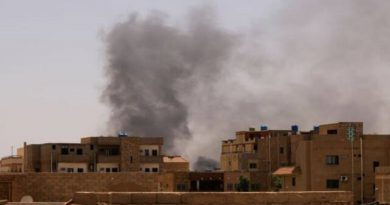OPINION: Syria Breathes Again—But One Final Obstacle Remains
Syria’s recovery is not just symbolic—it’s strategic. A stable, unified Syria is essential for regional security, refugee returns, and long-term economic integration.
The war in Syria may not be over on paper, but on the ground, the tide has clearly turned. Since the collapse of the Assad regime in December 2024, nearly 250,000 Syrian refugees in Turkey have returned home. This movement is not driven by propaganda or pressure, but by something far more powerful: the hope that Syria, at long last, is stabilizing.
That hope is grounded in real, visible change. The Damascus Stock Exchange has reopened, signaling a cautious but meaningful restart of the formal economy. Finance Minister Mohammed Yisr Barnieh called it a message to the world—that Syria is back in business.
The turning point came on May 13, when U.S. President Donald Trump, during a landmark visit to Riyadh, announced the lifting of sanctions on Syria. Ten days later, the U.S. Treasury issued General License 25, permitting transactions with Syria’s new transitional government, headed by President Ahmad Al-Sharaa. The EU swiftly followed with a coordinated suspension of its own sanctions regime. In less than two weeks, Syria went from pariah to partner in the eyes of global policymakers.
The momentum is not only diplomatic. Gulf states are stepping up. On Saturday, Saudi Foreign Minister Prince Faisal bin Farhan Al Saud, speaking from Damascus, announced a joint initiative with Qatar to help fund salaries for Syrian civil servants. These are the sorts of actions that turn ceasefires into recoveries.
And yet, despite these gains, Syria’s path forward still faces one last—and deeply entrenched—obstacle: the PKK-affiliated administration in northeast Syria, branded to the world as the Autonomous Administration of North and East Syria (AANES), and militarily represented by the PYD and SDF.
Let’s be candid. For years, Western governments, NGOs, and think tanks have celebrated the AANES as a “progressive” alternative in Syria. But the reality on the ground tells a much darker story. Despite controlling vast natural resources, receiving billions in foreign aid, and enjoying unprecedented U.S. military protection, the AANES has delivered little more than corruption, repression, and instability.
Entire Arab and Assyrian communities have been displaced under their watch. Basic services remain in disrepair. Youth conscription, political detentions, and even child recruitment are not allegations—they are documented practices. Many in Raqqa, Deir Ezzor, and Hasakah view the AANES not as a government but as an occupying structure—an extension of the PKK’s transnational project, not a legitimate representative of the Syrian people.
This is not just Syria’s internal issue. It’s a regional problem. The longer these entities maintain their grip, the harder it becomes to achieve a unified, sovereign Syrian state capable of rebuilding and reconciling.
To its credit, the transitional government in Damascus has not responded with vengeance. President Al-Sharaa has focused on restoring institutions, rebuilding national infrastructure, and pursuing a post-conflict political identity that moves beyond sectarianism. But these efforts will remain incomplete until all Syrian territories are returned to accountable, sovereign administration.
In this context, the reopening of the U.S. embassy in Damascus sends a powerful signal. Newly appointed American envoy Thomas Barrack—who also serves as the U.S. ambassador to Turkey—raised the American flag over the embassy for the first time since 2012. He praised Syria’s new leadership and openly discussed the prospect of peace between Syria and Israel—once a diplomatic impossibility. Barrack noted that the Caesar Act sanctions must now be repealed by Congress, describing President Trump as impatient with sanctions that obstruct reconstruction.
None of this should be mistaken for instant success. The Syrian state remains fragile. Public sector wages are still well below the cost of living. Corruption, while being addressed, is not yet defeated. And sectarian wounds—especially those left by clashes between pro-Assad remnants and local communities—will take time to heal.
But from my perspective as a European political analyst, this is the first time in years that Syria’s future feels negotiable rather than doomed.
To my Arab readers: Syria’s recovery is not just symbolic—it’s strategic. A stable, unified Syria is essential for regional security, refugee returns, and long-term economic integration.
To Western policymakers: the failed experiment of non-state actors ruling eastern Syria must end. It did not bring democracy. It brought dysfunction. The time has come to support a Syrian solution, not a Kurdish separatist detour funded by Western guilt and strategic confusion.
The Syrian war broke the country. But the outlines of recovery are finally emerging. The world has a choice: engage constructively—or prolong the suffering under the illusion of alternatives that have long since collapsed.



